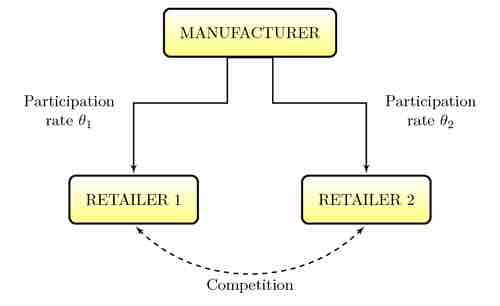Logistics
The term Logistics Management or Supply Chain Management is the part of Supply Chain Management that plans, implements, and controls the efficient, effective, forward, and reverse flow and storage of goods, services, and related information between the point of origin and the point of consumption in order to meet customer's requirements.

Distribution chain
Example of how companies may be supplied by the same distributor.
Logistics involves the integration of information, transportation, inventory, warehousing, material handling, and packaging, and often security. Today, the complexity of production logistics can be modeled, analyzed, visualized, and optimized by plant simulation software but is constantly changing. This can involve anything from consumer goods, such as food to IT materials, and aerospace and defense equipment.
There is often confusion over the terms "supply chain" and "logistics. " It is now generally accepted that the logistics applies to activities within one company/organization involving distribution of product, whereas supply chain also encompasses manufacturing and procurement and, therefore, has a much broader focus as it involves multiple enterprises, including suppliers, manufacturers, and retailers, working together to meet a customer's need for a product or service.
The Evolution of Logistics
Logistics as a business concept evolved in the 1950s due to the increasing complexity of supplying businesses with materials and shipping out products in an increasingly globalized supply chain, leading to a call for experts or supply chain logisticians. Business logistics can be defined as "having the right item in the right quantity at the right time at the right place for the right price in the right condition to the right customer," and is the science of process and incorporates all industry sectors. The goal of logistics work is to manage the fruition of project life cycles, supply chains, and resultant efficiencies.
Starting in the 1990s, several companies chose to outsource the logistics aspect of supply chain management by partnering with a 3PL, third-party logistics provider. Companies also outsource production to contract manufacturers. Technology companies have risen to meet the demand to help manage these complex systems.
Logistic Focus
In business, logistics may have either an internal focus (inbound logistics) or external focus (outbound logistics).
Inbound logistics is one of the primary processes of logistics, concentrating on purchasing and arranging the inbound movement of materials, parts, and/or finished inventory from suppliers to manufacturing or assembly plants, warehouses, or retail stores.
Outbound logistics is the process related to the storage and movement of the final product and the related information flows from the end of the production line to the end user.